Mawarden Court, Wiltshire: Humble, but fit for a lord
The Pitt family controlled one of the kingdom’s most notorious Parliamentary boroughs from this now compact house, reveals Clive Aslet.
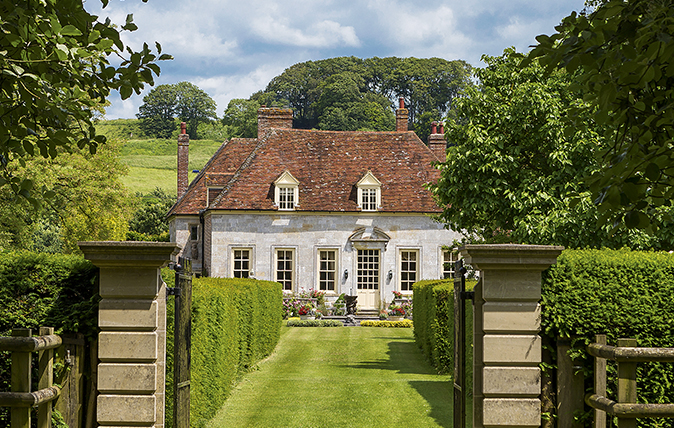
Visitors to Old Sarum in Wiltshire, the Iron Age hill fort and predecessor to Salisbury that was abandoned in the 13th century, may have noticed an exceptionally pretty house in Stratford-sub-Castle, the village that stands at its foot. Built of a silvery coloured stone, it has two broad gables to either side of the front door. Only one bay connects the two gables, making this many people’s dream: a compact house that, nevertheless, has a good deal of architecture about it.
The formality is emphasised by two runs of pleached limes, flanking the forecourt. A few yards away, more limes lead to St Lawrence’s Church, so it may come as no surprise that Mawarden Court, the house with the gables, was once the vicarage.
However, all is not as it seems. A plaque on one of the gate piers reveals that this house has been more than a vicarage: the future Prime Minister William Pitt the Elder, the 1st Earl of Chatham, born in 1708, spent his early years here. On investigation, moreover, it appears that the house was bigger at that date than it is now: the centrepiece between the two gables was originally three bays wide, rather than one. In the mid 19th century, the building was reduced with meticulous care and the right-hand gable moved to maintain the balance of the composition.
For the Pitt family, the interest of Mawarden lay in Old Sarum. As a defunct medieval borough, it retained the right to send two members to Parliament, although, by the 17th century, nobody was actually living there. Votes were cast by the absentee tenants of burgage plots, appointed by the lord of the manor. For this reason, it was the most notorious rotten borough in the kingdom.
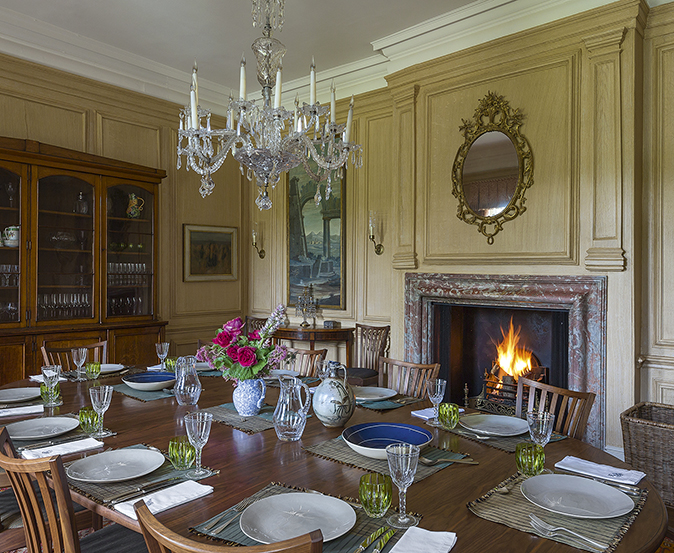
To William Cobbett, Old Sarum was ‘the Accursed Hill’, but Thomas Pitt, enriched with a fortune dubiously made in Madras, saw value in the democratic anomaly. He acquired a lease of the estate of Old Sarum in 1686 and it would provide an excellent return, not only as a means of providing himself, his family and Pitt supporters with a route into Parliament. According to James Easton’s The History of the Cathedral Church of Sarum, etc. (1825), Pitt purchased Old Sarum for £1,500; in 1802, his successors sold it to Lord Caledon for £65,000. As Thomas himself might have put it, in a favourite expression, ‘money begets money’.
Mawarden, which came with the estate, was presumably in reasonable condition, having undergone a campaign of work in 1673, to judge from a dated motto carved over the front door: Parva Sed Apta Domino, meaning ‘Humble but fit for the Lord’ (or for a Lord, depending on interpretation).
Born at Blandford Forum, Dorset, in 1653, Pitt was the son of a rector, but his parents died before he was 19 and, in 1673 (might that be relevant to the datestone of the house?), he sailed to India to trade as an ‘interloper’, a merchant who evaded the East India Company’s (EIC) monopoly.
Exquisite houses, the beauty of Nature, and how to get the most from your life, straight to your inbox.
Evidently, Pitt was a thorn in the EIC’s side, to judge from the efforts the company made to frustrate him; he was said to be a ‘desperate fellow’ with a ‘haughty, huffying, daring temper’. On returning to England in 1683, he was arrested, released on a large bail and later fined £1,000. He seems to have ignored the latter, instead investing in land.
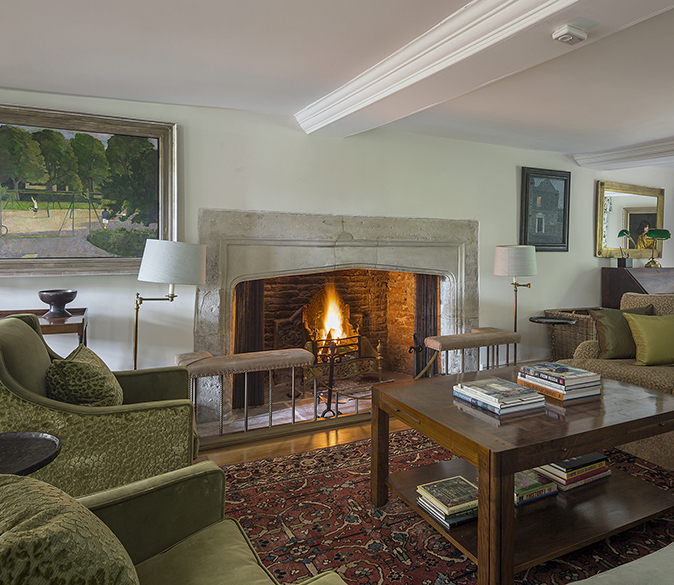
He bought an estate in his native Dorset as well as Old Sarum; later, he would acquire more land across the West Country, including Boconnoc in Cornwall, keeping a beady eye on the buildings. (‘Remember,’ he once wrote from India, ‘to buy no estate, but where there is a good house thrown into the bargain.’) Soon, he was improving his properties with the same intemperate energy that drove other aspects of his affairs.
After the Glorious Revolution of 1688, the former interloper was viewed in a quite different light by the EIC, which had been closely involved with James II. The company badly needed a Whig politician to represent it to the new regime and Pitt was about to become an MP. This is, no doubt, why his fine was reduced to £400 and he was asked to become a member of the EIC without having to pay for his entry.
In 1693, he set off on his last interloping trip and, thereafter, the EIC brought him into the fold. Although still regarded as a ‘roughing, immoral man’, he was made the governor of Fort St George at Madras. It was a moment of great tension, when the very existence of the old EIC was threatened by the creation of a new one.
Eventually, the two bodies merged and Pitt rode the dangers. Meanwhile, he managed to buy a colossal uncut diamond, weighing 410 carats, for £20,400. The Pitt or Regent Diamond was sent home in the custody of Pitt’s second son Robert; it became a major theme of his correspondence, as he agonised over its safety and cutting. He hoped to sell it to the Queen, but, in the end, it was bought by the Regent of France for £125,000.
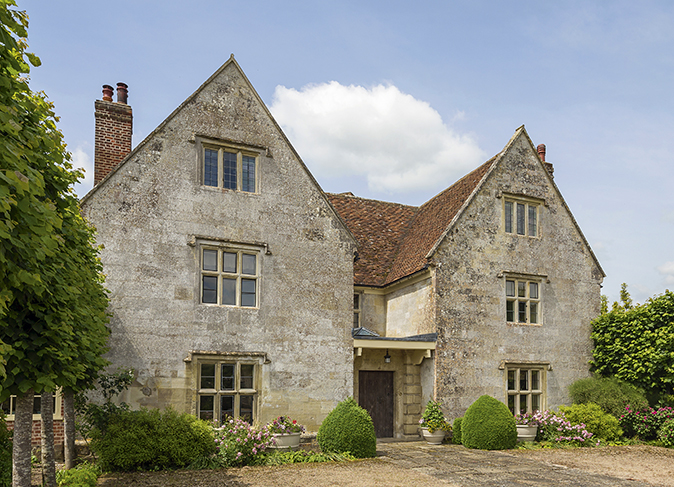
During Pitt’s absence, Mawarden was occupied by his wife, Jane. In 1649, the accommodation had consisted of a kitchen, parlour, brewhouse, buttery, larder, ‘old parlour’, milkhouse, six lodging chambers and two garrets and it had probably been little changed since then. Among her duties was the sending of seeds to Madras, although they seem not to have taken.
Pitt also wanted to be kept abreast of the tree planting on his estates as he travelled. In early 1702, he wrote to his steward at Mawarden: ‘I heartily intreat the continuance of your care of my plantations, and that you’l yearly increase them, and see that my Gard’ner keeps large nurseries of all sorts of Trees by him, that so I may have sufficient to transplant as I shall see occasion when I come home.’
That homecoming did not take place for a further eight years, during which time Pitt’s attempts to control his estates, his family and his wife’s extravagance drove him to frenzies of exasperation. Reports of Jane’s behaviour at Bath caused a permanent rupture and she had left Mawarden by the time of his return.
This did not stop him from judiciously improving it, presumably for Robert, who was then MP for Salisbury, after five years representing the non-existent citizens of Old Sarum. Although Robert had, by 1702, made £6,000 in India and China on his own account, his father allowed him no credit when it came to restoring the Stratford-sub-Castle church. THOMAS PITT ESQ BENEFACTOR is carved on the tower, which he rebuilt in a chequerwork of stone and flint in 1711.
Pitt also furnished the chancel with carved woodwork, commissioned a royal coat of arms and provided a curious series of bewigged gentlemen to serve as corbels.
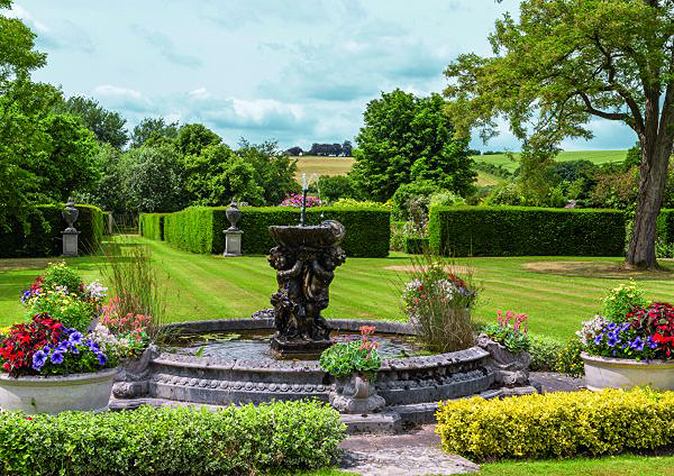
Was it at this time that Mawarden received its garden front? Six bays wide, with the segmental-headed door off-centre, it is built of the same stone as the front of the house. Although it has been argued that this was part of the 1673 project, the sash windows, which would have been extremely early for 1673, suggest it was added by Pitt. Afternoon light streams through them from the garden into what is now the dining room: a requirement, perhaps, for a man accustomed to the brightness of India and a contrast to the hall.
With economy in mind, the new wing comprises only a single storey and attic, with a (relatively modern) dormer window in the low-sweeping tile roof.
Urged to go to Oxford and study law, fortification and gunnery, Robert was a disappointment to his father; he only entered Lincoln’s Inn. Like his mother, he was berated for his luxurious ways, not least in the money he had spent to get elected at Old Sarum (Thomas’s election expenses had amounted to no more than £10 for the election dinner). ‘What hellish planet is it that influences you all?’ exploded Thomas on one occasion.
Although the governor was impossible, Robert emerges as mean-spirited and sneaky. He fell out with his mother and sisters. Soon after Thomas’s death in 1726, Jane had returned to Mawarden, staying ‘2 days, rhodo-montading and talking like a mad woman,’ wrote Robert, ‘and stirring up strifes with my tenants against mee’. As Stanley Ayling comments in his biography of the elder Pitt, ‘it was an inharmonious family among which the baby made his appearance’.
When Robert died only a few months after his father, it was William’s elder brother Thomas who inherited the estates; Billy Pitt, as he was called, became a soldier, before the five voters of Old Sarum sent him to Westminster.
In 1805, J. Buckler depicted the house in its unreduced state, before the demolition of a north wing and the remarkable compression of the centre of the entrance front. Other watercolours indicate that Mawarden remained in this condition until the mid 1830s; Ancient and Historical Monuments in the City of Salisbury (1977), dates the alterations to the second half of the decade.
By then, after the 1832 Reform Act, the house was a vicarage under the patronage of the dean and chapter of Salisbury Cathedral and one would like to know who it was who commissioned the campaign to decrease the size of the house, with its astonishing respect for the old work. What had presumably been the junction between the garden front and the demolished north wing was rebuilt in brick and, next to it, a decayed armorial was erected, as an antiquarian touch.
In 1840, the dean and chapter gave the living to Edward Caswall as perpetual curate; Caswall’s maternal uncle was bishop. Although the alterations that had just taken place are obscure, Caswall gives a detailed account of his life at Stratford-sub-Castle in his diary, extracts from which are published in Nancy Marie de Flon’s Edward Caswall, Newman’s Brother and Friend.
When at Oxford, Caswall had written witty pamphlets under the name Scriblerus Redivivus; however, he struggled to excite the parishioners of Stratford-sub-Castle to embrace anything more than a stolid form of Christianity. His introduction of daily services and Tractarian practices, such as Confession, had disappointing results.
After five years, Caswall followed his friend John Henry Newman into the Catholic Church. Searching his soul, he admitted that ‘it is too true that I took this curacy in part because I found it had a comfortable and most respected house’, among whose ‘various domestic comforts’ were ‘good furniture, servants, a nice garden, society and other secular advantages’. When he came to leave Stratford-sub-Castle, he found that he ‘really was beloved there’, but ‘they say goodbye rather to a “kind your gentleman” than to a Priest’.
Today, Mawarden Court may be even more comfortable than Caswall found it. Robin Moore Ede was the architect of a sensitive restoration, carried out by the builder Mouldings of Salisbury. In the course of this, the kitchen was moved from a position overlooking the entrance forecourt to the west front, allowing a constant passage between a beautiful house and its idyllic garden. It must surely be an English ideal.
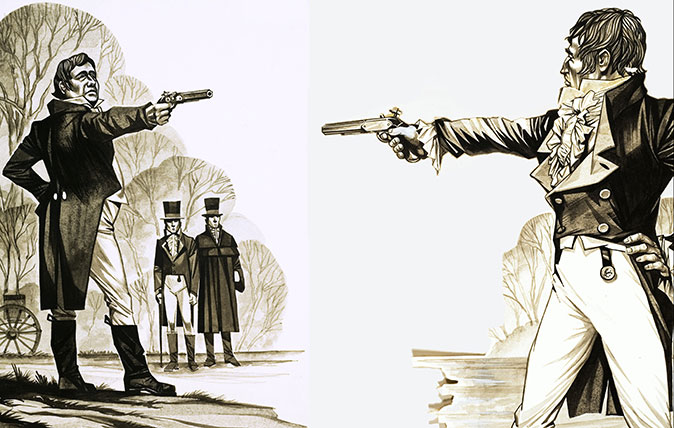
Credit: Bridgeman
Incredible things you never knew about duelling, from Wellington and Lincoln to poisoned sausage at 12 paces
Only a few generations ago, our forebears were prepared to shoot each other when affronted. Ian Morton reports on man’s
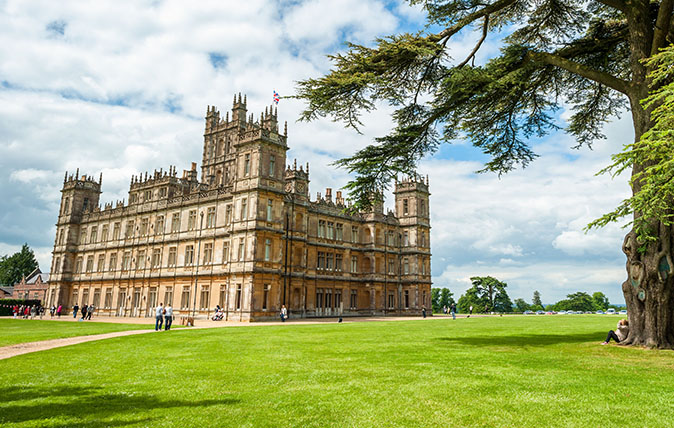
Life after Downton Abbey: How Highclere Castle is moving on
Highclere Castle was made famous across the world as Downton Abbey – and the money that it generated saved this beautiful
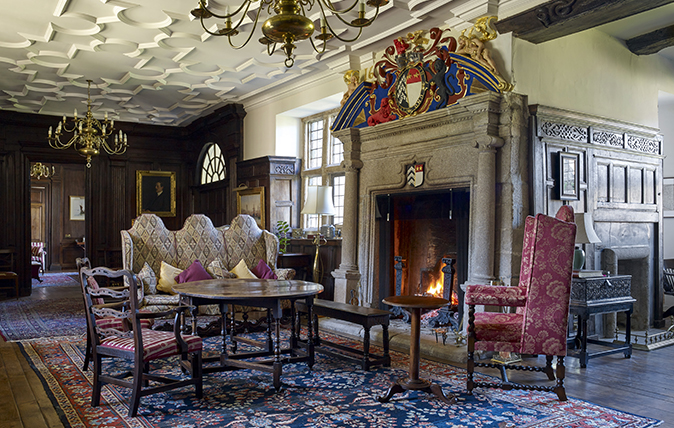
Credit: ©Paul Highnam/Country Life Picture Library
The extraordinary revival of Sydenham House, Devon: ‘Like the old house, but better’
This outstanding house has recently emerged from a major restoration following a disastrous fire in 2012. Despite the damage it